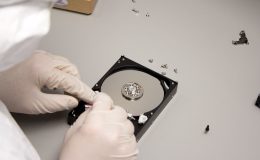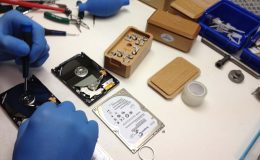Data Recovery for Mac: Salvaging Lost Files on macOS
- By : Jon Byrd
- Category : Data Service
- Tags: Data Recovery, Data Recovery Mac, data recovery service, Data Recovery Services, Houston Data Recovery

Mac computers are known for their reliability and performance, but like any other device, they are not immune to data loss. In this informative guest post, we’ll explore the world of data recovery for Mac in greater detail, guiding you through the process with short sentences and smooth transitions. We’ll cover the common causes of data loss, various recovery methods, and best practices to increase the chances of successful data retrieval.
Understanding Data Recovery for Mac
Data recovery for Mac involves retrieving lost or inaccessible data from a macOS-based device, such as an iMac, MacBook, or Mac Mini. This can include recovering data from a damaged hard drive, restoring deleted files, or accessing data from a corrupted or encrypted volume. The success rate of data recovery for Mac depends on several factors, including the type and extent of data loss, the device’s condition, and the methods used for recovery.
When attempting data recovery for Mac, it’s important to understand that macOS uses a unique file system called APFS (Apple File System) or HFS+ (Hierarchical File System Plus) for older devices. These file systems have specific characteristics and quirks that affect the data recovery process, requiring specialized techniques tailored to macOS.
Common Causes of Data Loss on Mac Devices

Data loss on Mac devices can result from various factors, including:
Accidental deletion:
It’s easy to accidentally delete important files or folders while navigating through your Mac’s file system. A single wrong click or keyboard shortcut can result in unintended data loss.
Disk corruption:
File system or partition errors can result in disk corruption, making the data stored on the affected volume inaccessible. Disk corruption can occur due to software bugs, abrupt system shutdowns, or hardware failures.
Hardware failure:
Hard drives, SSDs, and other hardware components can fail due to manufacturing defects, wear and tear, or physical damage. For example, a power surge can damage the drive’s controller, rendering it non-functional.
Software issues:
Glitches, bugs, or compatibility issues in macOS or third-party applications can cause data loss or corruption. In some cases, a software update or app installation may inadvertently lead to data loss.
Virus or malware attacks:
While macOS is generally considered more secure than other operating systems, it is still susceptible to malware infections that can lead to data loss. Ransomware, for instance, can encrypt your files and demand payment for their release.
Power outages or voltage fluctuations:
Sudden power loss or voltage fluctuations can cause data corruption or drive damage, leading to data loss. Investing in an uninterruptible power supply (UPS) can help minimize this risk.
Data Recovery Methods for Mac

There are several methods available to recover lost data from Mac devices, depending on the cause and extent of the data loss:
1. Built-in macOS Utilities
macOS includes several built-in utilities that can help you recover lost data:
Time Machine: If you have set up Time Machine to back up your Mac, you can easily restore lost files or even an entire system from a previous backup. Time Machine saves multiple versions of your files, allowing you to choose the most suitable version to restore.
Disk Utility: This versatile tool can repair disk errors, recover lost partitions, and, in some cases, restore corrupted volumes. Disk Utility’s First Aid feature can diagnose and fix many common disk issues, potentially recovering lost data in the process.
2. Data Recovery Software for Mac
Various data recovery tools are available specifically for macOS, which can help retrieve deleted or lost files. These tools often require a connection between your Mac and the affected storage device, allowing the software to scan the drive and recover data. Popular Mac data recovery software options include Disk Drill, Stellar Data Recovery, and EaseUS Data Recovery Wizard for Mac.
When using data recovery software, it’s essential to choose a tool with a proven track record and compatibility with your Mac’s file system and operating system. Some tools offer a free trial or limited functionality version, allowing you to preview recoverable files before committing to a purchase.
3. Target Disk Mode
Target Disk Mode allows you to connect two Macs via Thunderbolt or FireWire so that one Mac appears as an external hard drive on the other. This can be useful for recovering data from a Mac with a damaged operating system or hardware issues that prevent it from booting.
To use Target Disk Mode, follow these steps:
1) Restart the affected Mac while holding down the “T” key.
2) Connect the affected Mac to another Mac with a compatible cable.
4. Professional Data Recovery Services
In more complex situations, such as severe disk corruption, hardware failure, or encryption issues, professional data recovery services may be necessary. Experts in the field, like Digital Computer Forensics in Orlando, have the skills, tools, and experience to maximize the chances of successful data recovery for Mac devices.
Professional data recovery services use advanced techniques, such as clean room facilities and specialized hardware, to access and recover data from damaged or inaccessible Mac devices. While these services can be more expensive than DIY methods, they often offer a higher success rate, particularly in challenging situations.
Tips for Successful Data Recovery on Mac

To increase the likelihood of recovering lost data from your Mac device, consider the following tips:
Act quickly:
The sooner you attempt to recover lost data, the better your chances of success. Over time, deleted or lost data can be overwritten, making recovery more challenging.
Avoid writing new data:
After experiencing data loss, refrain from writing new data to the affected drive, as this may overwrite the lost data, reducing the chances of successful recovery.
Back up your data regularly:
Regular backups using Time Machine or another backup solution can prevent permanent data loss in many situations. Consider enabling automatic backups to ensure consistent protection.
Stay vigilant against malware:
Use reliable antivirus software and exercise caution when downloading files or opening email attachments to minimize the risk of data loss due to malware.
Seek professional help:
If you’re unsure about how to recover your lost data or face a complex situation, consult with a professional data recovery service to avoid causing further damage or data loss.
Conclusion
Data recovery for Mac is an essential aspect of preserving your valuable information stored on macOS-based devices. By understanding the causes of data loss, the available recovery methods, and best practices for successful recovery, you can navigate this challenging task with confidence. By following these tips and seeking professional assistance when needed, you can maximize your chances of retrieving your precious data and continue enjoying the benefits of your Mac’s robust performance and reliability.


